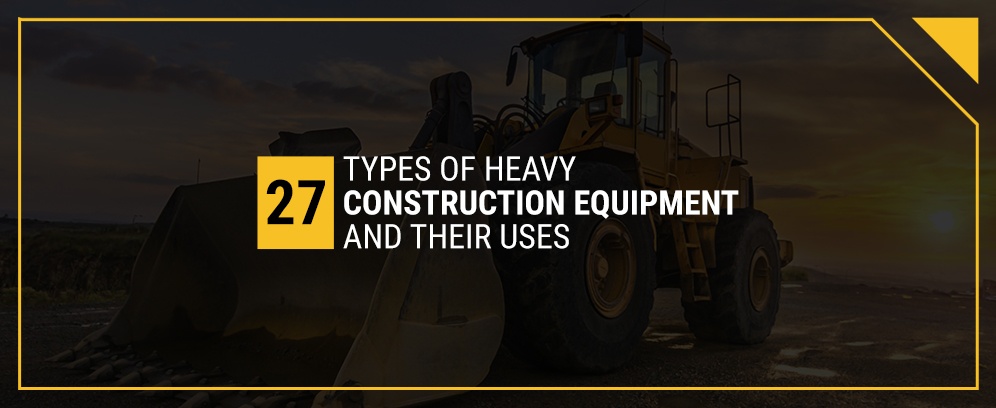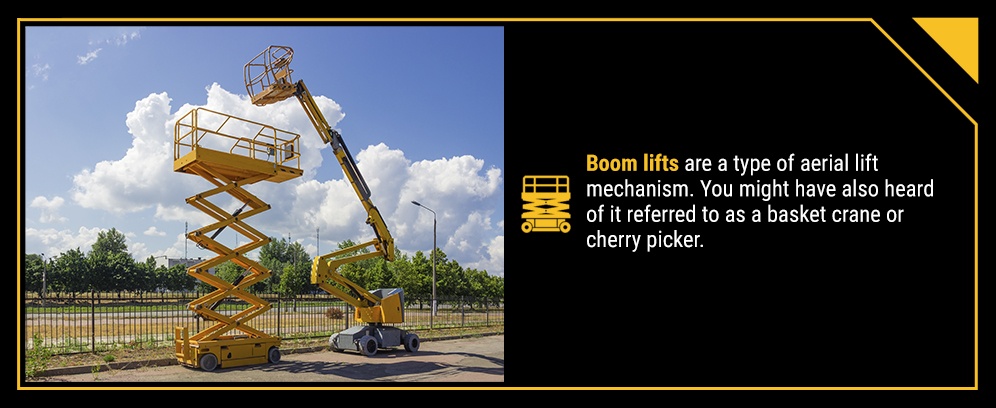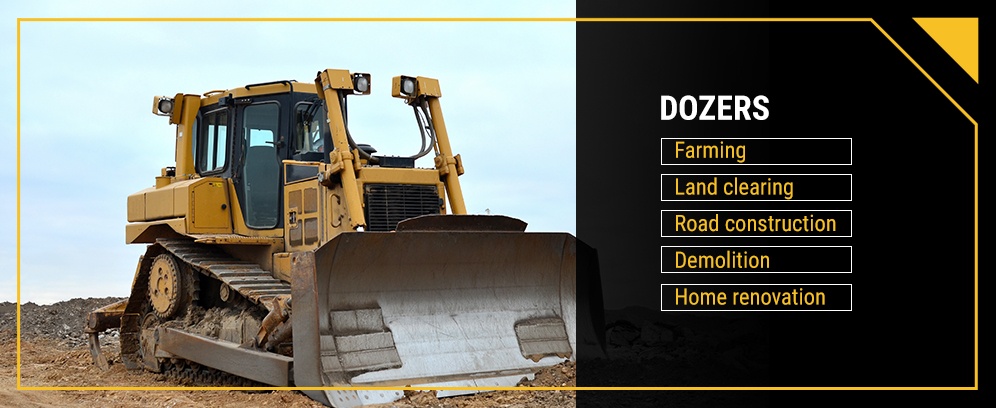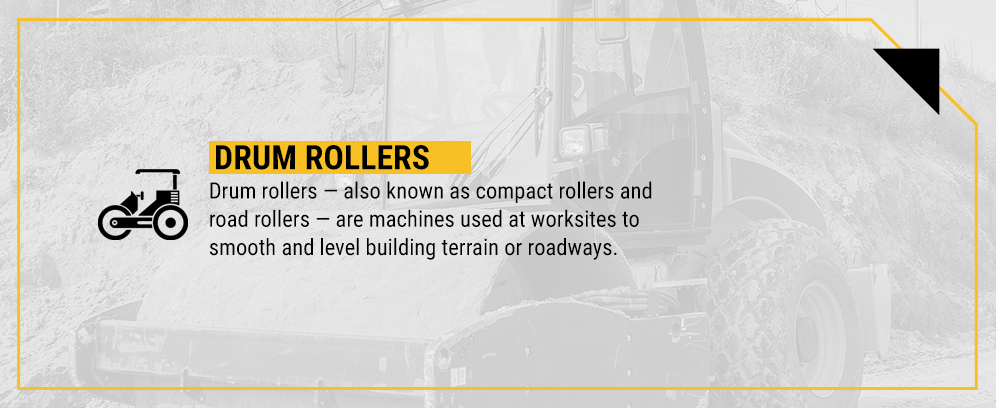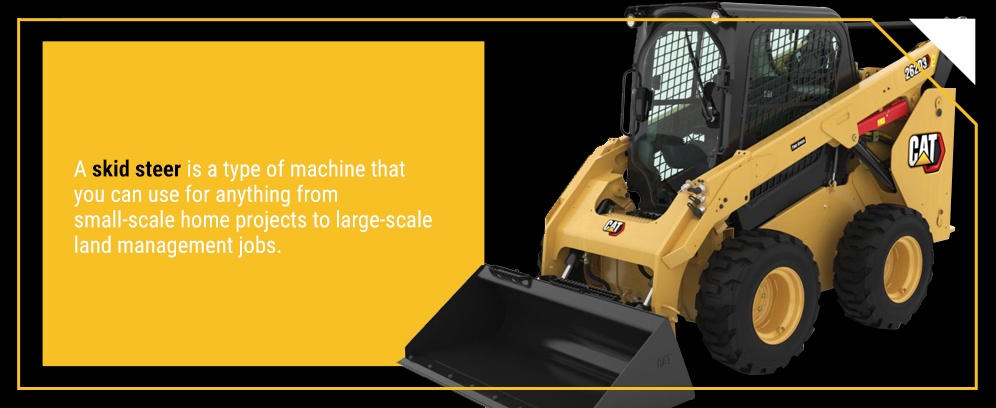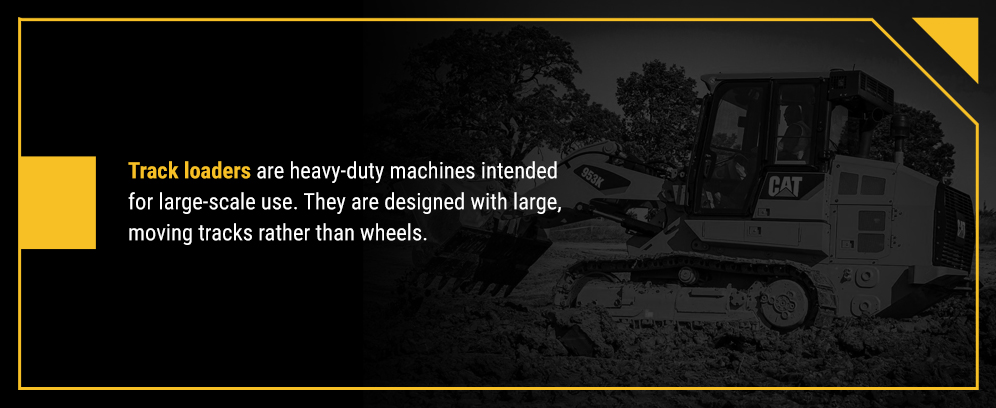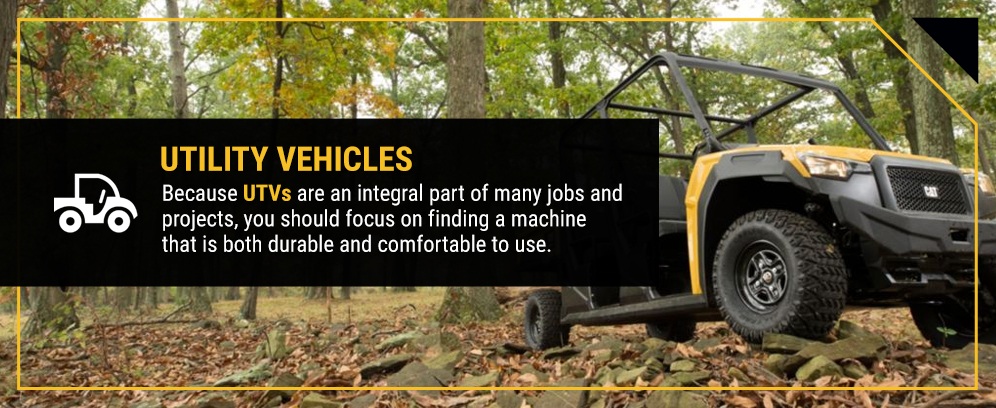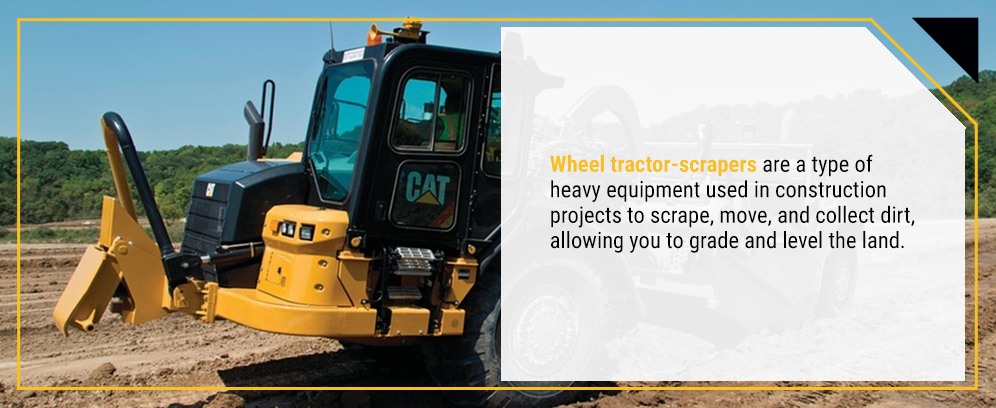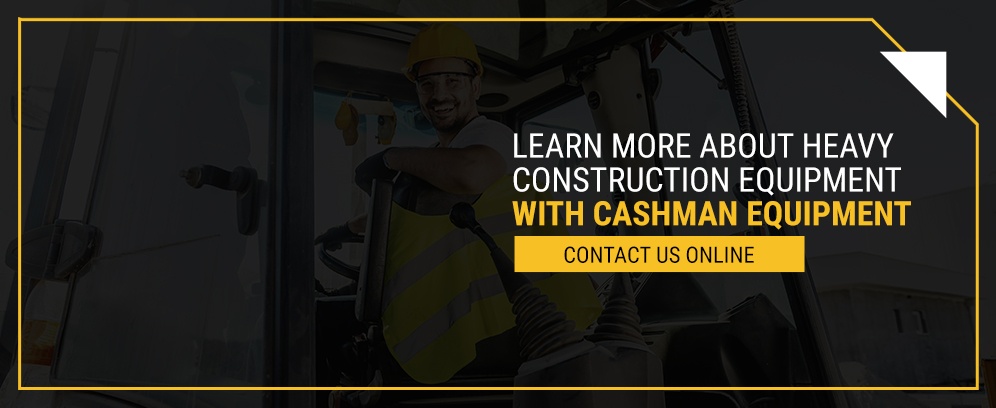In 2018, people bought more construction equipment than ever, thanks to a growing number of commercial, residential, and industrial projects that require heavy-duty tools and machinery to get the job done. Whether you’re working hard at a construction site, conducting road maintenance on a busy highway, or searching for the right tool for your large-scale landscaping project, there is a piece of equipment out there to make the work both easier and safer.
In this guide, we’ll discuss some of the most common types of heavy equipment and their applications.
1. Articulated Trucks
Articulated trucks are a type of heavy-duty dump truck that many praise for their versatility and adaptability. Unlike rigid haulers, articulated trucks consist of both a cab and a narrow trailer, or dump box. The two connect via a pivoting hinge. They are ideal for applications on challenging worksites with little to no paved roads, steep slopes, slippery or sandy surfaces, or low ceiling height.
You’ll find these at many types of job sites, including:
- Mining
- Recycling and scrapping
- Material and aggregate hauling
- Utility construction
Always match an articulated truck rental or investment to the size and type of load it will be hauling.
2. Asphalt Pavers
Asphalt pavers are usually accompanied by dump trucks carrying asphalt, which moves the material into the paver. Once it’s full, the asphalt paver uses dispersion augers to disperse the asphalt across a leveled surface. Then, it rolls it flat with a hydraulic cylinder, creating a solid, stable place to drive or walk.
You can use these pavers to lay asphalt on places such as:
- Public and private roads
- Driveways
- Parking lots
- Bridge decks
- Recreation courts
- Industrial sites
- Building construction
Asphalt pavers are available in a variety of paving widths and speeds.
3. Backhoe Loaders
A backhoe loader is a single piece of equipment that can function as either a backhoe, a tractor, or a loader. The durable backhoe is located on the back of the machine, while the loading mechanism is in the front. The central operating machine is the tractor.
Because it’s capable of handling so many different jobs, you can use a backhoe loader for things like:
- Farming
- Excavation
- Construction
- Hauling
- Digging
4. Boom Lifts
Boom lifts are a type of aerial lift mechanism. You might have also heard of it referred to as a basket crane or cherry picker. These attachments allow workers to reach elevated work areas but are not limited to only industrial or construction projects.
They are versatile and used across a variety of industries, including:
- Forestry
- Construction
- Painting
- Farming or harvesting
- Window cleaning
- Fire fighting
There are several different types of boom lifts, including telescoping and articulating. Boom lifts are suitable for one or more workers at a time, depending on the size of the bucket or platform.
5. Cold Planers
Cold planers are a type of heavy equipment for construction that utilize rotating drums and carbide cutters to mill pavement or asphalt. You can use a cold planer for either minimal or in-depth removal. Because pavement and asphalt milling creates a lot of dust, most cold planers utilize a water system to maintain a clean and safe work environment.
There are many reasons why one might use a cold planer to mill a roadway, such as:
- Recycling asphalt for new roads or other projects.
- Creating rumble strips for use along highways.
- Repairing existing damage.
- Smoothing land before paving to minimize any future potholes or cracks.
Like most heavy-duty equipment, cold planers are available in various sizes to suit several types of projects. Smaller machines are easily navigable and suitable for minor milling projects, while large machines are more challenging to navigate but can tackle large-scale projects with ease.
6. Compactors
Plate compactors use a heavy, vertically vibrating plate to crush and compact a surface into a level, flat area. The force behind the plate and the quick and repetitive movements work to break down and compact debris. In addition to industrial applications, you can also use a plate compactor to flatten an expanse of soil, sand, or gravel.
Depending on your application, choose between a single, reversible, or heavy-duty plate compactor:
- Single plate: Single plate compactors are suitable for small-scale asphalt or building projects, like home renovations or laying sidewalks and driveways.
- Reversible plate: For projects that require more versatility, reversible plates operate in multiple directions.
- Heavy-duty plate: Heavy-duty plate compactors are the best option for large-scale industrial, construction, or roadway projects.
7. Compact Track and Multi Terrain Loaders
You can use both a compact track loader and a multi-terrain loader to transport heavy worksite materials. The two machines look and function similarly, but they are not the same. Compact track loaders are intended for more rugged, heavy-duty use than a multi-terrain loader. However, that’s not to say a multi-terrain loader isn’t powerful or effective — it’s just better suited for terrains that require more care, like sod or turf, while the compact track loader can handle more challenging surfaces like rocks, mud, and sand.
While each offers an unparalleled level of versatility and traction, you must consider job site conditions when choosing a piece of loader equipment.
8. Dozers
Bulldozers, also known as track-type tractors and crawlers, are critical pieces of machinery for several types of projects, including:
- Farming
- Land clearing
- Road construction
- Demolition
- Home renovation
Dozers use a heavy-duty track to move with blades that can push rocks, building materials, debris, sand, snow, or dirt. There are a few different types of dozer blades, including the flat, edgeless straight blade, curved universal blade, and semi-universal combination blade.
9. Draglines
Draglines are a type of large-scale excavator used for reaching extensive depths at surface mining sites, above ground excavation sites, and more. Draglines function using a tall boom arm equipped with wire-based drag and hoist ropes. These ropes work together to move an attached bucket to and from its point of application. Once in place, the dragline operator controls the bucket so it can collect and move debris by dragging it across the surface.
Because they are so tall and heavy, many draglines are assembled on the worksite rather than transported, though there are smaller models available.
10. Drills
Rotary blasthole drills are a type of heavy equipment used for drilling holes at mine sites. Autonomous drills are a growing trend among equipment handlers because they have built-in features that can help you complete projects quickly and safely.
For example, automated drills today might feature:
- Depth tracking
- Built-in cameras
- Automatic leveling, retracting, and drilling
- HVAC systems to cool while limiting dust exposure
Non-automated drills offer just as much power, but these features can enhance the comfort and safety of your works as well as the overall productivity of the equipment.
11. Drum Rollers
Drum rollers — also known as compact rollers and road rollers — are machines used at worksites to smooth and level building terrain or roadways. They are immensely strong and can flatten surfaces quickly and effectively.
There are two types of rolling drums available:
- Smooth rollers: If the drum is smooth, it’s known as a smooth roller. As the name suggests, smooth rollers create smooth surfaces out of gravel, sand, or dirt using a combination of powerful vibrations and pressure. You can find these machines in either single or double-drum variations.
- Padfoot rollers: Padfoot rollers use the same technology as smooth rollers, in addition to a strong manipulative force that you can use to make soil more compact and solid.
12. Electric Rope Shovels
Electric rope shovels are another piece of heavy equipment used almost explicitly at mining sites due to their ability to withstand rugged work conditions and easily relocate large quantities of overburden and ore. Because they are powered by electricity, there are far fewer moving parts to wear down over time. This means you won’t have to spend as much money or time maintaining or replacing critical areas of your equipment. Modern-day electric rope shovels are energy-efficient and easy to operate.
13. Excavators
If you approach any construction site, chances are, you’ll find an excavator. These machines are robust and adaptable, making them a common fixture at large and small-scale projects. The excavator cabin — which you can rotate completely while in operation — is connected to a long arm and bucket, which you can use for excavating, demolishing, hauling, brush removal, and even forestry applications with certain attachments.
Excavators range in size, each suited for different applications:
- Mini excavators: Mini excavators can navigate small, hard-to-reach areas on construction sites, and are ideal for home-based or small-scale projects.
- Medium excavators: Medium excavators can handle larger jobs than mini excavators, but without taking up as much space as a large excavator. Large scale renovations, home improvement projects, and medium to large-scale construction sites can benefit from this configuration.
- Large excavators: Large excavators are large and very powerful. They are best suited for high-volume, large-scale operations.
14. Forklifts
You can use forklifts to move items short distances around a worksite or warehouse safely. There are several different types of forklifts to it any workplace scenario, including:
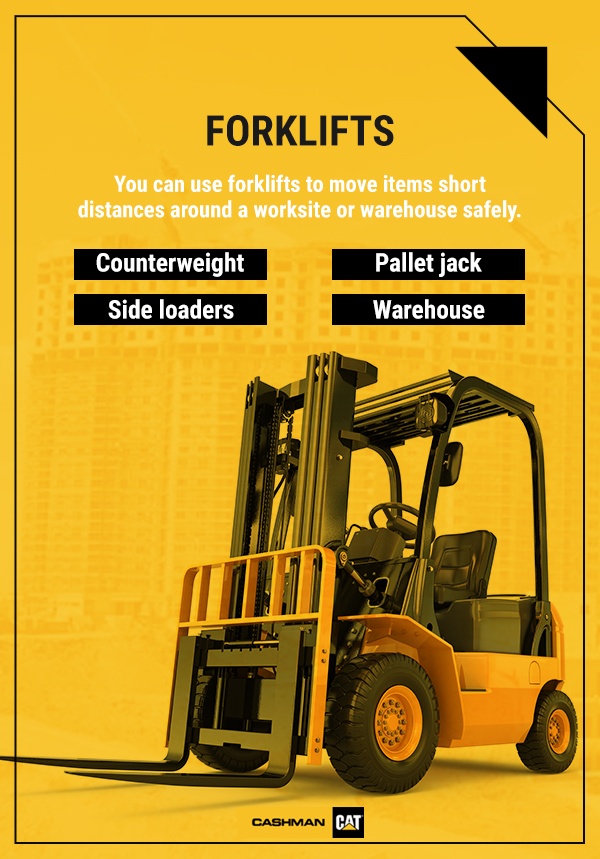
- Counterweight: Counterweight forklifts use a built-in counterweight system to remain stable while directly transporting products without using arms.
- Side loaders: Side loaders are ideal for warehouses with limited workspace and bulky materials, as the design of the machine allows the operator to load materials directly from their storage rack easily.
- Pallet jack: Pallet jacks are designed to specifically move pallets around a warehouse, and their small size makes them easy to operate.
- Warehouse: You can use a warehouse forklift to quickly move supplies, products, and shipments around a warehouse.
When choosing a forklift, always consider the weight and volume of the items you plan to use it with.
15. Hydraulic Mining Shovels
Hydraulic mining shovels use powerful hydraulic components for consistent, powerful digging and material moving at even the most challenging mine sites. Similar to electric rope shovels, hydraulic mining shovels are long-lasting and easy to use. Modern updates also make them safer and more ergonomic.
16. Motor Graders
Motor graders, or road graders, have long, narrow blades, also known as moldboards. This moldboard is rotatable, with a cutting edge on the bottom to help cut and move terrain for things like:
- Roadway installation or maintenance
- Fine grading
- Building projects
- Drainage ditches
- Snow removal
- Spreading materials
Compared to bulldozers, motor graders are usually better suited for heavy roadwork projects that demand versatility. You must understand how to operate a motor grader before using one, as different actors impact performance. For example, the more lean you put on the wheels, the deeper a cut will typically be.
17. Off-Highway Trucks
Off-highway trucks are a type of dump truck that offers heavy-duty hauling power for any type of harsh work environment. For this reason, they are a popular choice in mines, quarries, and large-scale construction sites that require efficient transport of bulk materials. Compared to traditional dump trucks, off-highway haulers can transport larger volumes of stone, soil, and other materials. Depending on what your project calls for, you could invest in an off-highway truck with multiple dump buckets to be even more efficient.
18. Scissor Lifts
An aerial scissor lift is a type of mobile, elevated work platform that acts as a stronger and safer alternative to a standard ladder. Because scissor lifts are comprised of steel and a series of crossed beams and struts, they provide a stable work area for one or more workers.
They are excellent for the following applications:
- Material handling
- Warehouse or stockroom storage
- Construction projects
- Commercial building maintenance
If you have hard-to-reach areas in your work area, a scissor lift is just what you need.
19. Skid Steer Loaders
A skid steer is a type of machine that you can use for anything from small-scale home projects to large-scale land management jobs. They are an asset to any worksite, thanks to the ability to connect different attachments to complete nearly any type of project.
For example, with the right attachments, you can use a skid steer loader for:
- Forestry
- Land clearing
- Landscaping and farming
- Road work
- Excavation
- Demolition
- Site cleaning
Skid steers are available in three different sizes: small, medium, and large.
20. Telehandlers
Telehandlers are similar to forklifts but are better suited for outdoor applications or bulk material moving inside a warehouse. You can connect different boom attachments, such as buckets or lift platforms, making them a versatile piece of machinery to have on the worksite. There are several types of telehandlers to choose from, including different variations of lift height, load capacity, and frame size.
21. Towable Light Towers
Have you ever had to race against the sun to complete an outdoor project? Towable light towers are the solution to this common occurrence. Light towers consist of a set of powerful lights attached to the top of a vertical beam, which is connected to some type of power generator or solar panel. The tower is easily portable, so you can take it with you from site to site and never worry about working in the dark. This keeps employees safer and increases the amount of available working time you have for a project.
22. Track Loaders
Track loaders are heavy-duty machines intended for large-scale use. They are designed with large, moving tracks rather than wheels. This enables the machine to move effortlessly across rugged terrain, including hard-to-reach areas. You can use a track loader to move or push debris or materials, as well as in excavation and land clearing.
23. Underground Mining Loaders
Underground mining loaders are very durable, low profile machines designed to make mining easier and faster. Mining loaders are similar to standard underground mining trucks, but with an attached bucket. They are crucial for any large-scale mining operation, as they allow you to haul and move materials safely. When choosing an underground mining loader, consider the size of your work area and the types of materials you work with.
24. Utility Vehicles
Utility vehicles — or UTVs — are compact, motorized transportation and hauling solutions. They function similarly to a small truck and look similar to a sport vehicle — but don’t underestimate these machines. They are incredibly useful tools for a variety of purposes, such as:
- Hauling materials across construction sites.
- Safe, enclosed transportation in hazardous work areas.
- Farming and landscaping projects.
- Easy hauling and transportation across narrow work areas.
Because UTVs are an integral part of many jobs and projects, you should focus on finding a machine that is both durable and comfortable to use. Today, UTVs have features like comfortable seating, quiet operation, adjustable steering columns, and spacious cabs.
25. Wheel Excavators
Wheel excavators are similar to standard excavating machines, but instead of utilizing a track system, they have wheels. Because of this difference, wheel excavators offer less traction on challenging terrain but are still powerful, stable machines. One of the most significant advantages wheel excavators have over tracked excavators is the ability to drive it around the worksite.
26. Wheel Loaders
Wheel loaders have a front-loading bucket you can use to move dirt and other materials. Compared to track loaders, these loaders are equipped with durable wheels, which makes it easy to navigate and drive across the worksite.
Different wheel loader attachments help this machine adapt to all of your project’s needs, including:
- Stump grinders
- Snowblowers
- Asphalt cutters
- Cold planers
- Trenchers
27. Wheel Tractor-Scrapers
Wheel tractor-scrapers are a type of heavy equipment used in construction projects to scrape, move, and collect dirt, allowing you to grade and level the land.
Here’s how it works:
- A sharp, angled scraper cuts into the dirt, loosening it.
- A hopper uses a conveyor belt system to collect and store this loose dirt.
- Once the hopper is full, you can then dump or transport the dirt wherever needed.
There are several types of wheel tractor-scrapers, including elevating, open bowl, push-pull, and tandem scrapers.
Learn More About Heavy Construction Equipment With Cashman Equipment
Are you looking to purchase or rent a piece of heavy construction equipment for your next job or project? Cashman Equipment is a full-service, family-owned and operated equipment provider that offers top-quality equipment and a team of dedicated professionals eager to help you get the most out of your machinery.
Contact us online to learn more about the uses of heavy construction equipment and which machinery is best for your worksite. You can also give us a call at 800-937-2326 or visit a location convenient to you.


